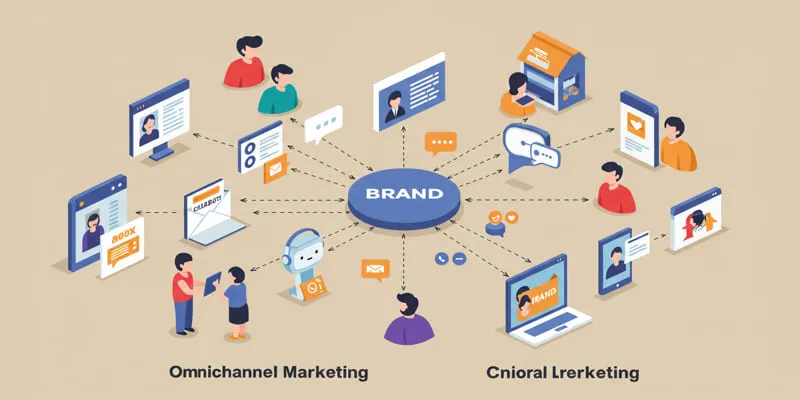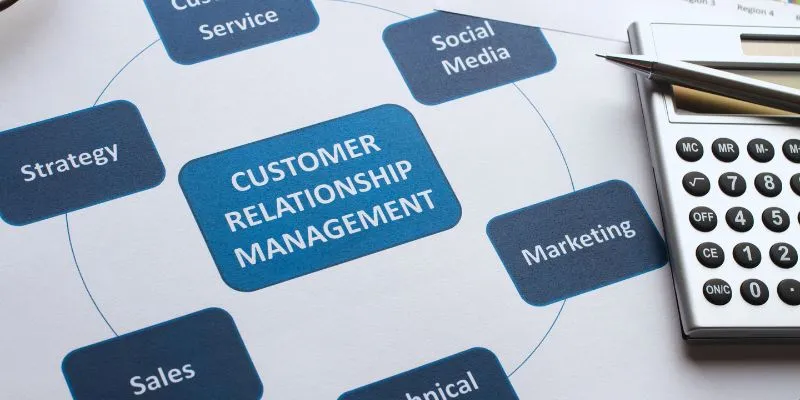Omnichannel Marketing 101: What It Is and Why It Matters
In today’s business environment, marketers must adapt to evolving customer needs. Companies are embracing omnichannel marketing strategies, ensuring a seamless brand experience across all customer interactions, whether online or offline. This article delves into the core aspects of omnichannel marketing, its benefits, and practical ways businesses can implement this approach to enhance both company performance and customer satisfaction.
What Is Omnichannel Marketing?
 Omnichannel
marketing integrates all sales and promotional channels to deliver a
consistent customer experience, regardless of the interaction method. Whether
customers engage online or in-store, they receive the same high-quality
service that aligns with their expectations across all marketing channels.
Omnichannel
marketing integrates all sales and promotional channels to deliver a
consistent customer experience, regardless of the interaction method. Whether
customers engage online or in-store, they receive the same high-quality
service that aligns with their expectations across all marketing channels.
Key Features of Omnichannel Marketing
- Seamless Channel Integration: All channels work together to provide a cohesive service.
- Customer-Centric Approach: Focuses on understanding customer behavior and preferences.
- Consistent Branding: Maintains uniform messaging and visuals across platforms.
- Marketing Automation: Utilizes data to create personalized interactions based on past customer actions.
Omnichannel vs. Multichannel Marketing
While both methods aim to connect with customers on all platforms, they require different implementation strategies. Here’s a comparison:
| Feature | Omnichannel Marketing | Multichannel Marketing |
|---|---|---|
| Integration | Channels are interconnected | Channels operate independently |
| Customer Experience | Seamless and consistent | Varies by platform |
| Focus | Customer-centric | Channel-centric |
| Data Usage | Unified data sharing across platforms | Limited data integration |
Multichannel marketing aims for maximum exposure across platforms without focusing on channel integration. Omnichannel marketing, however, prioritizes the customer journey across these platforms.
Why Does Omnichannel Marketing Matter?
Omnichannel marketing is a crucial strategy for companies to thrive in the competitive modern market. Here’s why it matters:
1. Enhanced Customer Experience
Customers expect seamless and consistent interactions with a brand. Omnichannel marketing creates a unified experience by integrating various platforms, such as online research and in-store pickup, into one cohesive process.
2. Improved Personalization
By merging data from all touchpoints, businesses can offer personalized interactions. Understanding customer behavior enables tailored recommendations and services.
3. Increased Customer Loyalty
Consistency fosters trust and loyalty. Satisfied customers are more likely to make repeat purchases and recommend the brand to others.
4. Higher Revenue Generation
Customers using multiple sales channels tend to make larger purchases. Studies show that shoppers engaging with four or more channels spend 9% more during in-store visits.
5. Better Operational Efficiency
Omnichannel strategies streamline operations by connecting all sales platforms with inventory systems, reducing duplicate efforts and optimizing supply chain processes.
Benefits of Omnichannel Marketing
 Organizations
gain significant advantages from adopting omnichannel strategies, which
contribute to business growth.
Organizations
gain significant advantages from adopting omnichannel strategies, which
contribute to business growth.
| Benefit | Description |
|---|---|
| Boosted Sales | Seamless experiences encourage purchases across multiple channels. |
| Customer Retention | Positive experiences inspire loyalty and repeat interactions. |
| Expanded Reach | Engaging customers on diverse platforms increases visibility. |
| Improved Brand Recognition | Consistent messaging strengthens brand identity. |
| Higher ROI on Marketing Efforts | Unified strategies reduce acquisition costs while increasing conversions. |
How to Build an Effective Omnichannel Strategy
Establishing an omnichannel marketing strategy requires careful planning. Follow these steps to achieve success:
1. Understand Your Audience
Leverage customer data to identify preferences and challenges across all contact points.
2. Map the Customer Journey
Outline the complete customer journey, from initial brand exposure to purchase completion.
3. Integrate Technology
Connect your marketing system with CRM, marketing automation, and analytics tools to manage customer data from various channels.
4. Ensure Consistent Branding
Maintain uniform branding elements across all platforms to reinforce brand identity.
5. Personalize Interactions
Use data insights to offer personalized content, such as targeted emails and advertisements based on web activity.
6. Optimize for Mobile
Ensure your digital platforms are mobile-friendly to accommodate the growing use of mobile devices.
7. Monitor Performance
Analyze performance data to assess customer engagement, purchase frequency, and retention, identifying areas for improvement.
Examples of Omnichannel Marketing Success
Several companies have demonstrated success through effective omnichannel strategies.
Starbucks Rewards Program
- Customers can access their rewards account details via both the website and app.
- Rewards are earned regardless of whether purchases are made online or in-store.
Nike
- The app offers personalized shopping experiences with tailored options.
- Customers can browse online and reserve products for in-store pickup.
Amazon
- Consistent product pricing is maintained across the online platform and mobile app.
- Customers can start shopping on one device and continue on another seamlessly.
Challenges of Omnichannel Marketing
Despite its benefits, omnichannel marketing presents challenges that companies must overcome.
- Integrating multiple systems into a cohesive strategy requires significant technical expertise.
- Organizations must comply with data privacy laws, such as GDPR, when collecting customer data.
- Initial technology setup can be costly.
Companies can address these challenges by adopting flexible technology solutions and transparently communicating data usage practices to customers.
Conclusion
Omnichannel marketing is essential for companies aiming to provide exceptional customer service and achieve growth. By unifying all customer touchpoints into a single strategy, businesses can increase sales, foster customer loyalty, streamline operations, and expand into new markets. In today’s digital world, companies of all sizes can gain a competitive edge by implementing a comprehensive online business approach.
Related Articles

Enhance Your Customer Support with These 6 Automation Strategies

AI in Customer Service: 11 Ways to Automate Support and Boost Efficiency

The 24 Best Sales Tools to Supercharge Your Team's Performance

The 11 Best CRMs for Small Business: Streamline Your Workflow in 2025

Maximize Your Customer Understanding with User Personas: A Powerful Tool

The 8 Best Content Marketing Tools in 2025 to Elevate Your Strategy

The 6 Best Session Replay Tools in 2025 to Optimize Your User Experience
Popular Articles

Use PowerToys Run to Mimic Mac's Spotlight in Windows

The Best Methods to Convert Videos to MP4, MP3, and Other Formats

How to Resolve Website Loading Issues in Chrome, Firefox & Safari

Turn Low-Res Clips Into HD: Top 5 Converter Tools

A Step-by-Step Guide to Setting Up Donation Can in WordPress

Boost Your Writing: 5 AI Tools to Improve Your Content

3 Easy Ways to Transform AVCHD Files into AVI Format

8 Easy Techniques to Extract Audio from Video Files

7 Scheduling Mobile Apps Users Love: Streamline Your Daily Routine

Converting WMV to MOV on Mac Made Simple: Top 5 Solutions

How to Convert MXF to MPEG Video: 7 Simple and Efficient Methods

 mww2
mww2